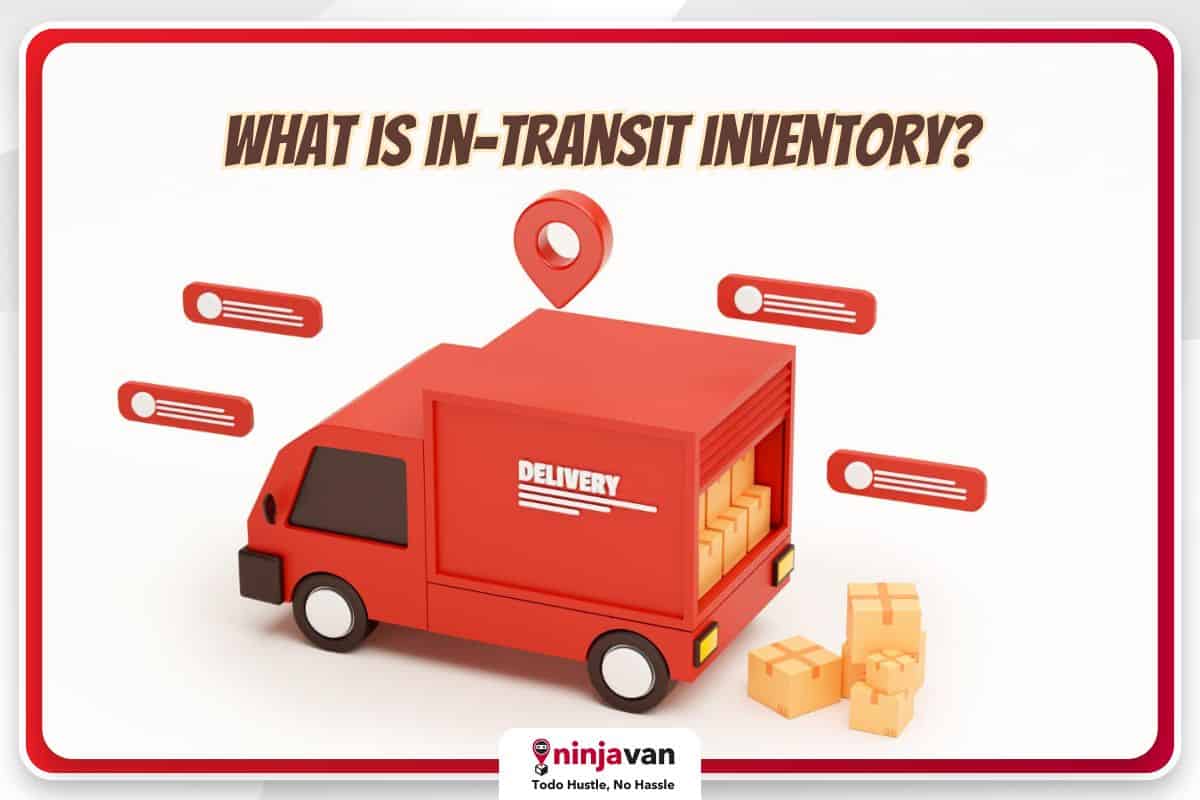Inventory management is vital for your online business. When done right, you can avoid overselling while minimizing order fulfillment issues and keeping your customers happy.
But inventory doesn’t just cover products in a warehouse or storage facility. It also includes products that are in transit in your supply chain.
Here’s what you should know about in-transit inventory, the challenges they present and how you can minimize disruptions in your operations.
What is transportation inventory?
Transportation inventory refers to goods, products or materials in transit from one part of your supply chain to another. They’re also known as in-transit inventory or inventory in transit.
In a typical supply chain for small online sellers, your product comes from a supplier and is shipped to you or your third-party logistic (3PL) partner’s warehouse. From there, the inventory stays in storage until a customer orders it, and the inventory is packaged and shipped to them. These periods are known as in-transit inventory.
Why is in-transit inventory important to businesses?
Inventory management gives you an overview of your inventory, which can prevent you from ordering too much or too little. By knowing how much is in transit between your supplier and yourself or your warehouse, you can estimate how much inventory you’ll have even if they’re not yet in storage.
By counting the packages in transit to your customers, you can account for delays and returned packages before you count your product as sold. Additionally, keeping track of your inventory provides advantages, such as:
1. Maintaining customer satisfaction
In-transit inventory ensures that businesses can fulfill customer orders — even if the products aren’t physically present at the warehouse yet.
2. Optimizing inventory levels
Businesses can account for in-transit inventory to optimize their overall inventory levels. It prevents businesses from overstocking while getting new inventory or stockouts.

3. Reducing lead times
Keeping track of your in-transit inventory can help reduce lead times. It can improve efficiency and minimize the time it takes for products to reach their final destinations.
4. Mitigating supply chain risks
In-transit inventory provides a safety buffer against supply chain disruptions. If there are disruptions in the supply chain, having goods already in transit provides businesses with available inventory to continue fulfilling orders.
#NinjaTip: Get shipping and logistics solutions tailored to your business needs. Ninja Van is your one-stop logistics partner to optimize your business for growth. Discover what we can do for your business.
Who owns the inventory while in transit?
Ownership can depend on who covers the shipping costs, shipping methods, the risks of damaged goods during the transit and the terms of sale. In general, there are two types of terms:
Freight-on-board shipping point
Ownership transfers from the seller to the buyer when the goods are loaded onto the carrier at the seller’s location. For instance, the moment your supplier hands your inventory to a less-than-truckload carrier, you’re the owner of the goods even before it reaches your warehouse.
Freight-on-board destination
Ownership remains with the seller until it reaches the final destination. In this case, your supplier would pay for shipping and bear the risks of damage and lost goods until it reaches your warehouse.
Tips to effectively manage in-transit inventory
1. Real-time shipment tracking
When you work with partners that offer real-time tracking, you can track the location of your goods. The system helps sellers manage their inventory and know when goods will arrive. It also lets sellers know of any delays so that they can adjust their inventory and order fulfillment as needed.
2. Get in-transit inventory insurance
Business owners shoulder plenty of risks while their inventory is in transit. To reduce your losses, consider investing in insurance for your inventory. It minimizes potential losses due to theft, damage or accidents during transit. The investment may reduce the financial risk associated with in-transit inventory.
3. Choose a reliable carrier
Reliable carriers ensure secure and on-time delivery of your inventory. They can also help minimize delays, damage and issues with fulfilling orders. The expertise of a carrier can affect your entire supply chain and how you handle your overall inventory management process.
4. Prepare a contingency plan
Disruptions to your supply chain can happen for various reasons. A contingency plan helps you continue operations despite the delays and softens its impact. For example, consider reordering inventory before you run out so that you’re still able to deliver what your customers ordered.
5. Partner with 3PLs
3PLs streamline inventory management, including how you manage your in-transit inventory. 3PLs provide the warehousing infrastructure, transportation, distribution and order fulfillment. Instead of working with multiple service providers, work with a 3PL partner who will manage your in-transit inventory for you.
How Ninja Restock can provide in-transit inventory solutions
Small business owners who want to grow their online businesses need to optimize how they handle their inventory. But with partner couriers usually taking on transportation, choosing the right service provider can affect your overall operations. To maximize 3PL services for your business, choose Ninja Restock.

Ninja Restock offers fast, affordable and reliable solutions for transporting your inventory where and when you need them. These services are optimized for small businesses who want to outsource their inventory carrier solutions. Whether you need transport for warehouses or stores, Ninja Van offers innovative features, including:
- Smaller load requirements – perfect for small businesses in search of LTL solutions.
- Affordable pricing – we tailor our packages to your needs.
- Faster delivery – Ninja Van’s efficient delivery team covers nationwide delivery.
Optimize your inventory management with Ninja Van. Talk to our team today to see why small businesses across Southeast Asia trust our inventory management solutions.
More logistics solutions for your growing business:
Why You Need To A One-Stop Logistics Solution
The Top Benefits of Warehouse Automation
What’s the role of 2PL in Your Supply Chain?






